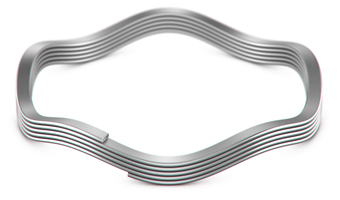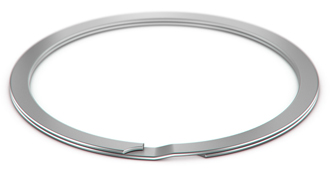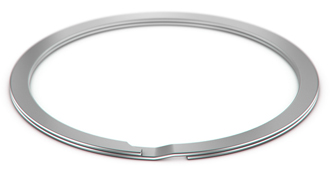Ask the Expert - Nested Wave Spring Design and Spirolox Retaining Ring Interchange
Welcome back to the Ask the Expert Blog, where our engineers answer commonly asked retaining ring and wave spring design questions. This week, our experts field some questions about Spirolox retaining rings and nested wave springs.
What is the maximum number of turns for a nested wave spring? Can loads still be toleranced with this many turns?

There is not a specific maximum number of turns for a nested spring, but every application is different. A nested spring with many turns may work for one project, but not for another. On springs with a very high spring rate, such as a nested spring, it can be more difficult to tolerance the loads. Minor changes in the wire thickness or free height in the spring from lot to lot can have a dramatic impact on the loads. Our Engineering team will review all new spring designs and discuss our capabilities with you.
Additional Resources:
- Learn more about nested wave springs here: https://www.smalley.com/wave-springs/nested
Are old Spirolox retaining ring part numbers considered custom parts by Smalley?
The following Spirolox® series do directly interchange with a Smalley standard series: UR, US, RR, RS, RRT, RST, RRN, and RSN. The other series listed in the Spirolox catalog were standard designs, but not stocked items. Parts from these series would be considered custom items. Below you will find the interchange listing:
|
Smalley |
VH | VS | WH | WS | WHT | WST | WHM | WSM |
| Spirolox | UR | US | RR | RS | RRT | RST | RRN | RSN |
Additional Resources:
- Watch our Spirolox video here: https://www.youtube.com/watch?v=qwKj5AEvO4U
- Learn more about Spirolox here: http://www.smalley.com/retaining-rings/spirolox
What are the differences between internal and external Spirolox retaining rings?
Retaining rings are designed to cling in a groove. On shaft rings, the inside diameter is used while on housing rings, the outside diameter is used. The rings are dimensioned and toleranced so that they have the appropriate amount of grip in the respective groove. The end configurations will be different for shaft rings and housing rings to help facilitate the removal of the ring.

Internal Retaining Ring

External Retaining Ring


Connect With Us